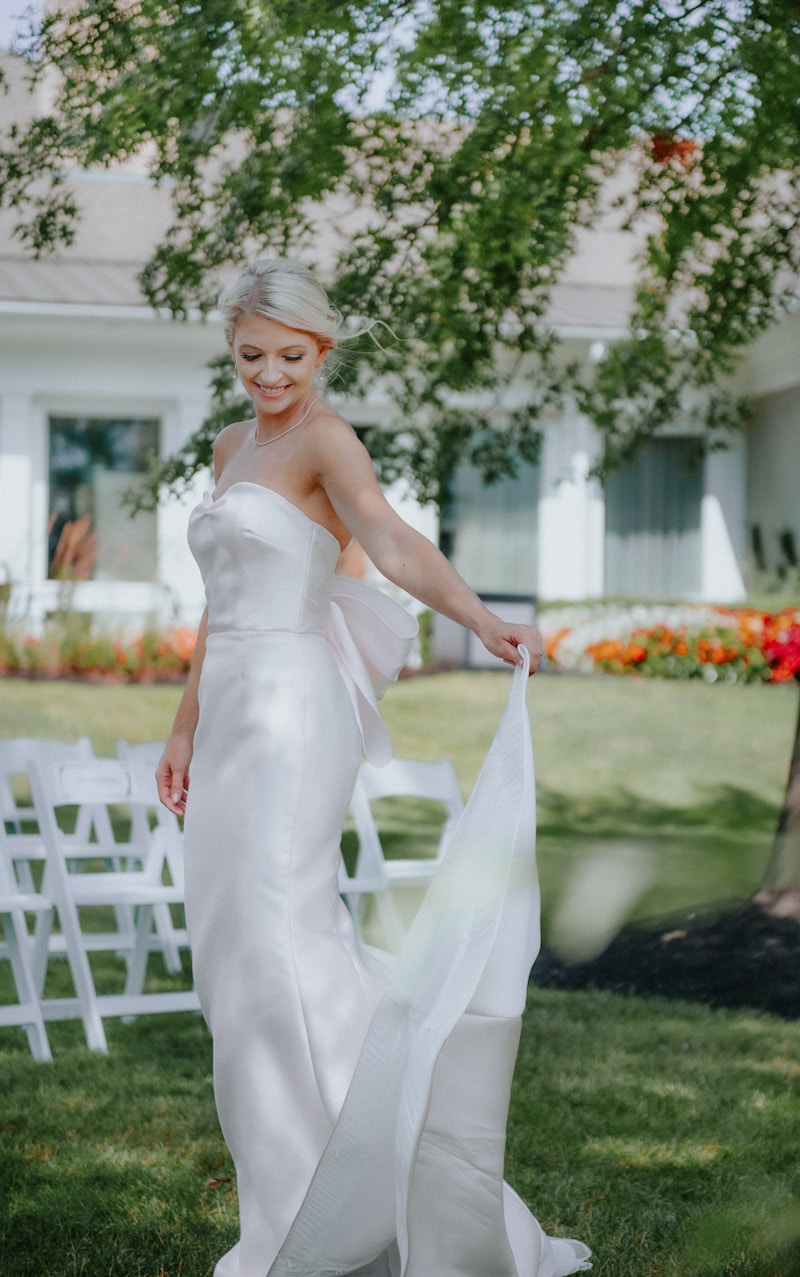Expert Guide to Custom Wedding Dress Alterations: Transforming Your Dream Dress into Reality
Weddings are one of the most significant moments in our lives, and for brides, finding the perfect wedding dress is paramount. However, the journey to achieving that perfect look often goes beyond simply purchasing a gown; it frequently involves custom wedding dress alterations. This comprehensive guide will explore everything you need to know about custom wedding dress alterations, ensuring that your bridal gown fits your body like a glove and embodies your unique style.
Understanding Custom Wedding Dress Alterations
Custom wedding dress alterations are essential modifications made to a wedding gown to enhance its fit, comfort, and overall appearance. These adjustments can vary from minor tweaks to significant changes, depending on the bride's preferences and the gown's design. Custom alterations ensure that every bride feels confident and radiant on her special day.
Why Are Custom Alterations Necessary?
Even if a dress is labeled as "ready-to-wear," it may not fit every bride perfectly due to differences in body shapes, sizes, and proportions. Here are a few reasons why custom wedding dress alterations are necessary:
- Fit: Ensuring a proper fit is crucial for comfort and confidence.
- Design Adjustments: Alterations allow for modifications to the design elements, such as neckline or hemline adjustments.
- Personalization: Custom alterations can transform a standard gown into a unique masterpiece that reflects the bride's personality.
Common Types of Alterations
Custom wedding dress alterations can be categorized into several types, each addressing specific needs. Here are some common types of alterations brides may consider:
| Alteration Type | Description |
| Hemline Adjustment | Shortening or lengthening the dress to achieve the desired floor length. |
| Waistline Adjustment | Taking in or letting out the waist to achieve a flattering silhouette. |
| Strap Adjustment | Modifying straps for better fit and comfort, which is essential for backless designs. |
| Train Adjustment | Adding or removing a train for a more dramatic look or practicality. |
| Chest Alterations | Adjusting the bust area for support and to prevent slipping. |
The Alteration Process
The process of custom wedding dress alterations usually involves several steps, ensuring that the final result meets the bride's expectations. Here’s what you can typically expect:
1. Consultation
During the consultation, the bride discusses her vision for the dress and identifies specific areas needing alteration. This is also an excellent opportunity to share any concerns or preferences.
2. Fitting Sessions
Multiple fitting sessions are typically scheduled to make precise adjustments. In each session, changes will be made based on the bride’s feedback and fit.
3. Final Adjustments
In the final fitting, any last-minute tweaks are addressed, ensuring the dress is perfect for the big day. It’s crucial to give yourself enough time for these fittings, usually starting at least two months before the wedding date.

Choosing the Right Tailor
Selecting the right tailor for custom wedding dress alterations can make all the difference. Here are some tips for choosing an experienced and reputable tailor:
- Experience: Look for a tailor who specializes in wedding dresses and has extensive experience.
- Portfolio: Ask to see examples of previous alterations they have done.
- Reviews: Read reviews from past clients to gauge their satisfaction with the tailor's work.
- Communication: Ensure that the tailor is attentive and communicates clearly throughout the process.
Budgeting for Custom Alterations
Understanding the costs associated with custom wedding dress alterations is vital for budgeting. The price can vary widely based on factors such as the complexity of the alterations, the tailor's experience, and your location. Here are some typical expenses brides should consider:
- Basic Hemming: $50 - $200
- Taking in the Waist: $50 - $150
- Restructuring Bodice: $100 - $300
- Custom Modifications: $150 and up
It’s a good idea to discuss the budget upfront with your tailor to avoid any surprises later.
Tips for a Successful Alteration Experience
Here are some practical tips to ensure your alteration experience goes smoothly:
- Start Early: Begin the alteration process as soon as you purchase your dress, ideally at least two months before the wedding.
- Wear Appropriate Underwear: Bring the undergarments and shoes you plan to wear on your wedding day to fittings for a better fit.
- Stay True to Your Style: While alterations can enhance the dress, ensure they align with your vision and personal style.
- Communicate: Keep an open line of communication with your tailor. Don’t hesitate to express any concerns or desires regarding the alterations.
Conclusion
Custom wedding dress alterations are an integral part of achieving the perfect bridal look. They not only enhance the fit of your gown but allow you to personalize your dress in a way that reflects your unique style. By understanding the types of alterations, choosing the right tailor, and budgeting appropriately, you can pave the way for a successful alteration experience. Remember, it's all about bringing your dream wedding dress to life. Take the necessary time and care to ensure your alterations result in a gown that makes you feel stunning as you walk down the aisle.
In summary, keep these key points in mind:
- Custom wedding dress alterations are essential for achieving the ideal fit.
- Be proactive and start the alteration process early.
- Communicate effectively with your tailor to express your preferences.
- Budget appropriately to accommodate all necessary alterations.
May your wedding day be as beautiful as the gown you wear!